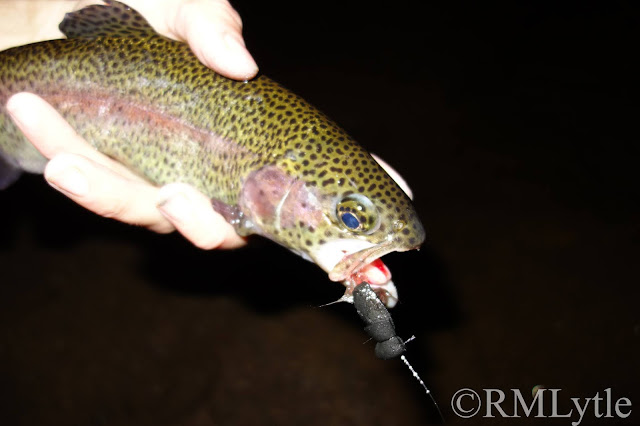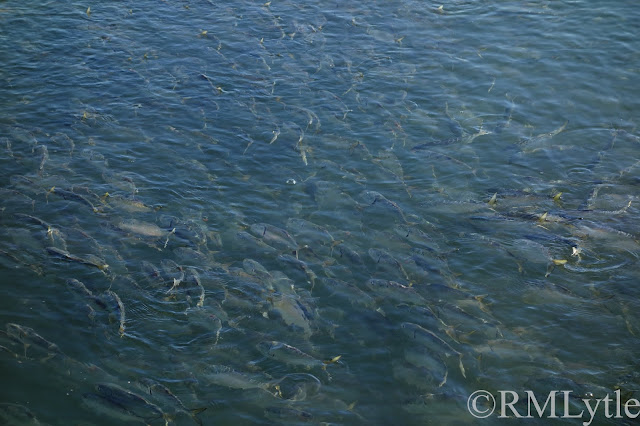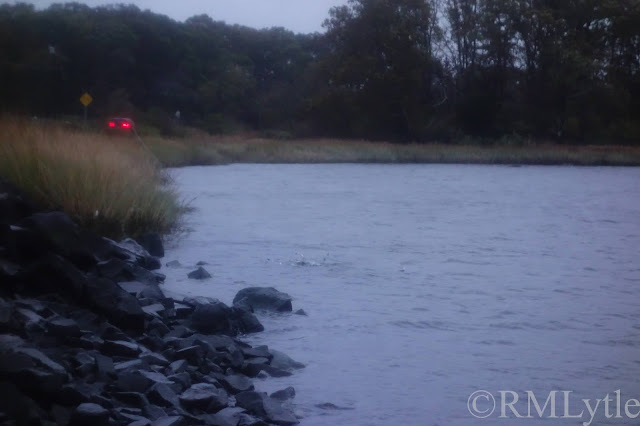This is an entirely fishless post, but I hope you will all enjoy it.
Back in September, my friend and mentor Bruce and I took a strenuous hike through an important piece of Northeast timber rattlesnake habitat.
I've been observing timer rattlesnakes in Connecticut since either 2012 or 2013; I can't remember which year I saw my first, but I can remember the moment like it was yesterday. I was with my Dad and my brother, out doing photography in the woods, and my dad saw it first. It was, as I now understand, a large gravid female yellow phase. She was half tucked under a rock, but we could see enough to get a more than strong enough impression of her magnificence. I can't put into words what it's like to see your first timber rattlesnake -especially if you are keenly intrigued by the natural world- it's shocking. Jaw dropping. Eye widening.
I needed to see more. And upon next returning to that exact spot, I did. I had no idea at the time but that little outcropping happened to be an important summer brooding area, and my next visit, a year later, was at exactly the right time. I walked up to the spot to see not just one or two snakes, but seven adult timber rattlesnakes distributed around the place. My prior awe was taken to a new level and I was hooked. I kept going back to that spot over the years and usually saw a timber or two. Then, last year, on my first visit to that spot, I met Bruce. I think we were both a little suspicious of each other at first, certainly him more so of me. But we hit it off pretty quickly. We are cut from a very similar cloth, Bruce and I. We go about observing wildlife with the same intent, drive, and care. And I think we both care more about these snakes than we do ourselves. I measure my own worth in my ability to preserve and protect these animals. If I leave the world without having done everything possible to make sure timber rattlesnakes are still in the CT hills, I've gone wrong somewhere along the line. Bruce and I are both very protective of these snakes and their habitat, suspicious of any human activity around them, and weary of our own impacts. We are also driven to see them and learn as much as we can, and that was our intent on that calm, warm September day. Neither of us had hiked the habitat before. We sought to add to our body of knowledge and experience.

We weren't there specifically for rattlesnakes, actually. Our goals were more broad. This same habitat was shared by a number of other species we were interested in seeing. However, the first snake found more than an hour in to the trip, was something neither of us expected. I walked int a clearing to see Bruce looking down into a blueberry bush, saying "that is not what I expected to see up here". I walked over and looked into the same bush. There coiled off the ground in the branches was a beautiful ribbon snake. Ribbon snakes are a very wetland oriented species. Up here; at least a mile from the nearest large vernal pool on a high dry mountaintop ledge; this species was a very surprising sight.
It's things like this that keep me obsessed. I may never know what exactly had drawn that snake to that spot. But it was there, coiled in the branches, suspended off the ground, doing what I'd seen ribbon snakes do before. Just over a ledge instead of over the edge of a wetland.
We continued our search, hoping from ledge to ledge, looking around rocks and logs, in blueberry bushes, next to stumps... it was tiresome and not as fruitful as we might have hoped, but eventually I heard Bruce call out, headed over to where he was and he'd found a beautiful adult timber. It was nestled next to a cover rock with a load of fallen limbs making photography very difficult, but no encounter with a healthy timber rattlesnake ends without me smiling.

Seeing that snake really got our hopes up, we thought we'd soon find some others. This was new land to us though, and even on our home territories we'd both had a very difficult time this year. The harsh, dry, often very hot conditions had made snakes shyer than they may otherwise have been. It's hard to see a rattlesnake that's hiding under a 500lb rock, and that is very often what they were doing. So the situation was against us. We again went a while without seeing a thing when I just happened to glance down at a hanging slab of granite below me and saw a small rattlesnake perched in the leaf litter next to it. Not only was it one of the cleanest, most stunningly patterned and colored timbers I've ever seen but it was completely relaxed and perched fabulously. It was the perfect photography snake. The pictures I took of this young timber are among my favorite photos I've ever taken.

That was the last rattlesnake we saw on that mountain that day. It wasn't one of those incredible but very possible days where we could see fifteen or more adult rattlesnakes on just one hill, we've both had days like that. But it was exceptionally thrilling to see the snakes we did see, especially being that it was a population we'd not been to before.
With snow now on the ground, by mind drifts to days past and days future, but even with the snakes all now in their wintering dens I can't help it. I've been spotting ledges through the woods from the road, planning trips for next year, and even walking habitat to get the lay of the land. I'm obsessed with snakes. I have been since before I can remember. I'm just so thrilled now to have the chance to go see wild snakes on the regular.
*Timber rattlesnakes are a protected species in every Northeast state, and are endangered in CT. Killing or harming one is illegal. Possessing one is illegal. Even trespassing on some den locations is illegal. If you are so lucky as to observe a timber rattlesnake in the wild, maintain a distance of about 10 feet, try to disturb the snake as little as possible, and do not share the location of the sighting with anyone except CT DEEP. Poaching and black market pet trade are one of if not the largest threats to CT's rattlesnakes today. The fewer people know where these animals are the better.
Fish for the love of fish.
Fish for the love of places fish live.
Fish for you.
And stay safe and healthy.
Thank you to my Patrons; Erin, David, John, Elizabeth, Brandon, Christopher, Shawn, Mike, Sara, Leo, C, Franky, and Geof for making Connecticut Fly Angler possible. If you want to support this blog, look for the Patreon link at the top of the right side-bar in web version.




















































